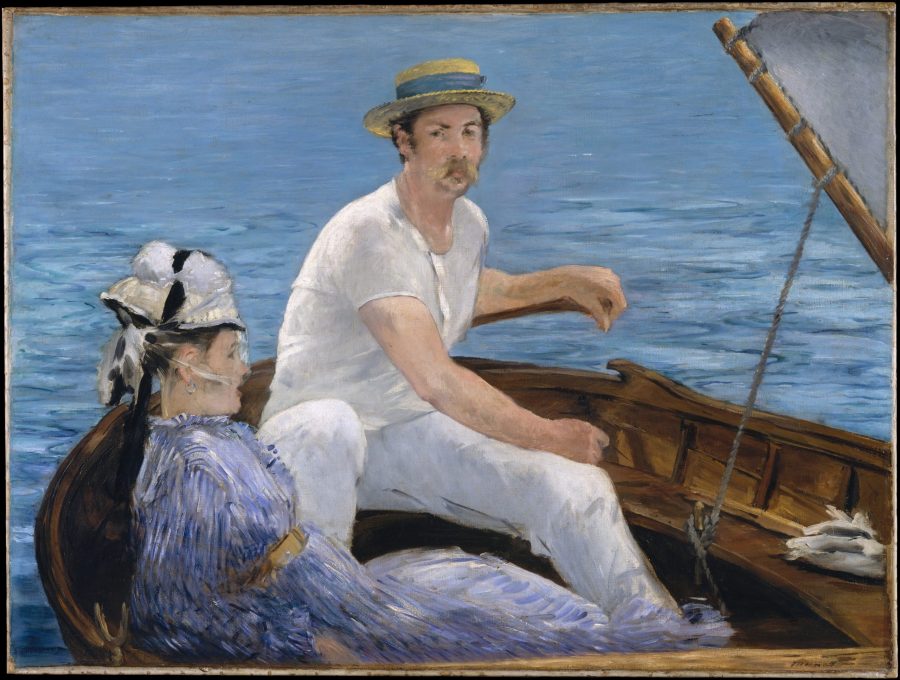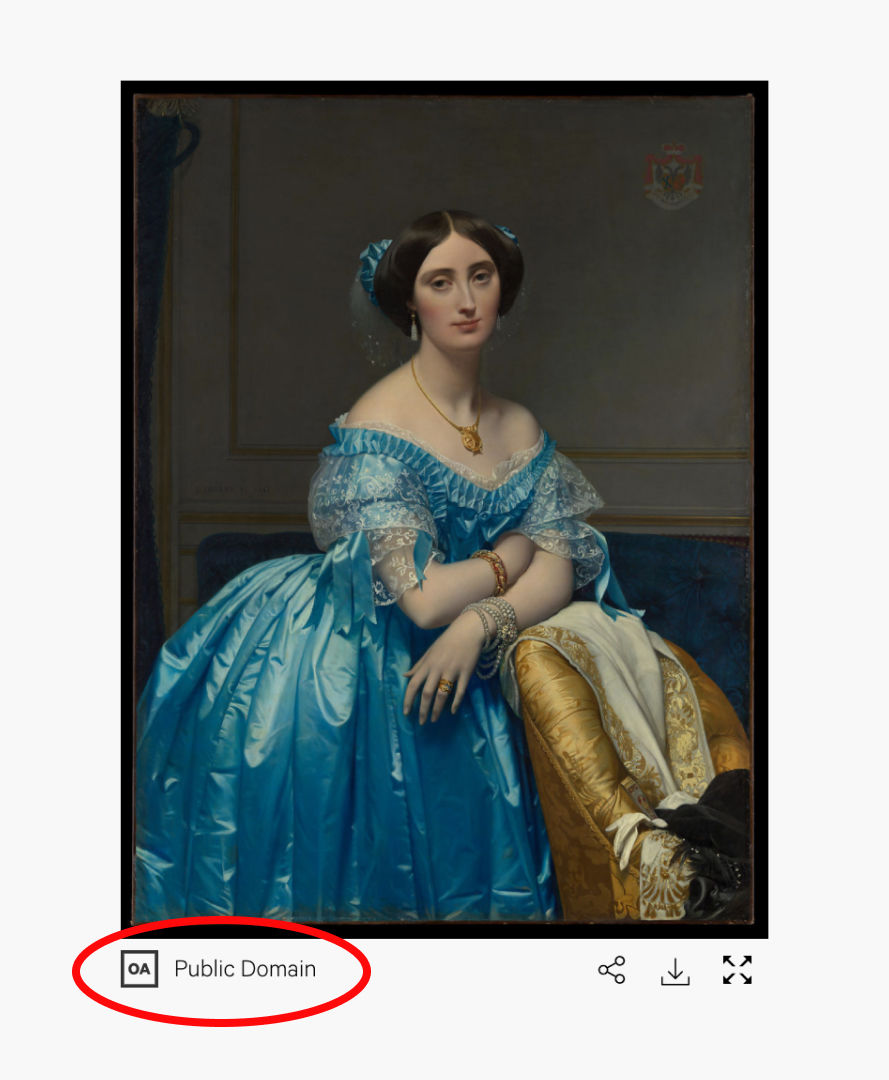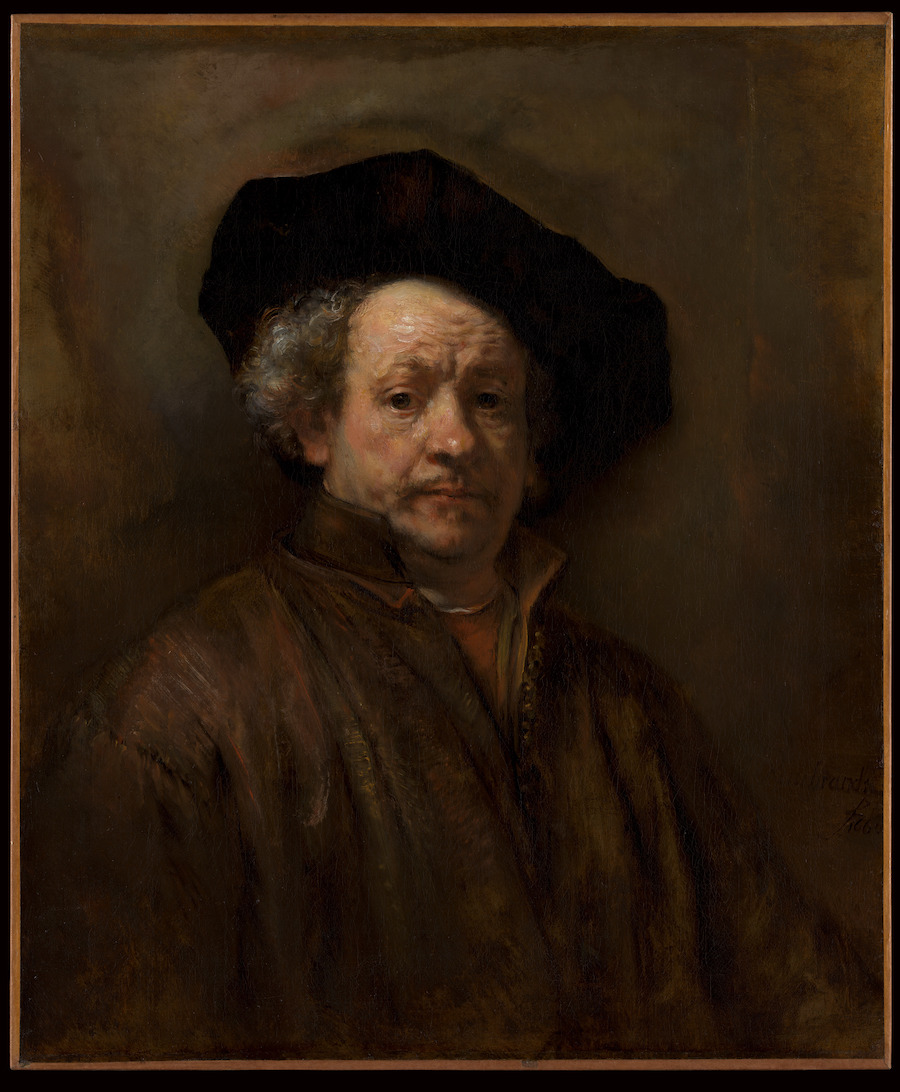
Update: The Metropolitan Museum of Art has put online 492,000 high-resolution images of artistic works. Even better, the museum has placed the vast majority of these images into the public domain, meaning they can be downloaded directly from the museum’s website for non-commercial use. When you browse the Met collection and find an image that you fancy, just look at the lower left-hand side of the image. If you see an “OA” icon and the words “public domain” (as shown in the example below), you’re free to use the image, provided that you abide by the Met’s terms.
In making this collection available online, the Met joined other world-class museums in putting large troves of digital art online. Witness the 88,000 images from the Getty in L.A., the 125,000 Dutch masterpieces from the Rijksmuseum, the 50,000 artistic images from the National Gallery, and the 1.9 million images from the British Museum.

It takes a little patience. But once you start surfing through the Met’s digital collections, you can find and download images of some wonderful masterpieces. We’ve embedded a few of our favorite picks. At the top, you will find the 1874 painting “Boating,” by Édouard Manet. In the middle, Rembrandt’s “Self-Portrait” from 1660. At the bottom, a 1907 photograph by Alfred Stieglitz called “The Steerage.” And that’s just starting to scratch the surface.
Happy rummaging. And, when you have some free time on your hands, you should also check out another open initiative from the Met. The museum has also put 500+ free art books online. You can learn about them here.

Note: An earlier version of this post appeared on our site in 2014. We have updated it to reflect some of the changes made in the Met collection over the past decade.
If you would like to sign up for Open Culture’s free email newsletter, please find it here. It’s a great way to see our new posts, all bundled in one email, each day.
If you would like to support the mission of Open Culture, consider making a donation to our site. It’s hard to rely 100% on ads, and your contributions will help us continue providing the best free cultural and educational materials to learners everywhere. You can contribute through PayPal, Patreon, and Venmo (@openculture). Thanks!
Related Content:
The British Museum Puts 1.9 Million Works of Art Online


> meaning they can be downloaded directly from the museum’s website for non-commercial use
Commercial use is also allowed. According to the Met:
“Open Access data and public domain images are available for unrestricted commercial and noncommercial use without permission or fee.”
Thank you for giving access to some great works of art. It’s a great public service.
I would love to hang up a couple in my study.
Is there a link available from the Museum of Modern Art website?
Regards
Jayshree
If you go to metmuseum dot org there is a link to Open Access
The author is a bit confused about the term “public domain”. No public domain work may be restricted from use, either commercial or otherwise.
Tthe Public Domain Review has a pretty good explainer:
publicdomainreview.org/what-is-the-public-domain/
In short:
Creative works that are not protected by copyright are said to be in the “public domain”, a vast commons of material that everyone is free to enjoy, share, and build upon without restriction.